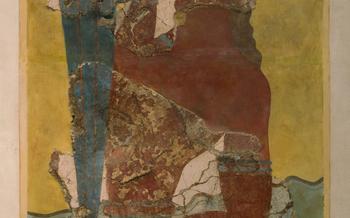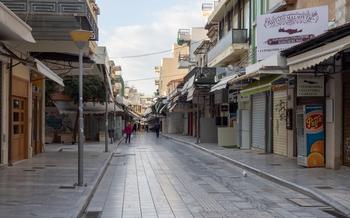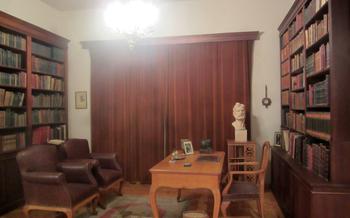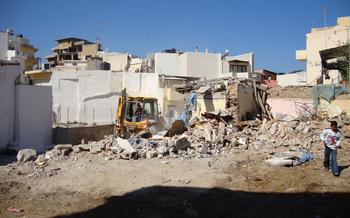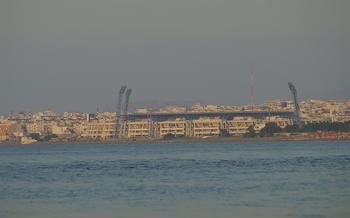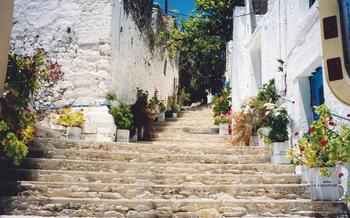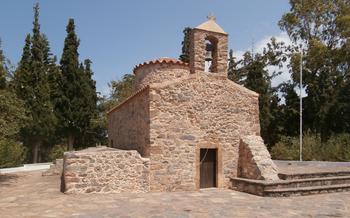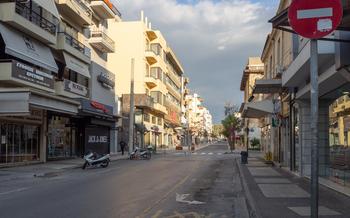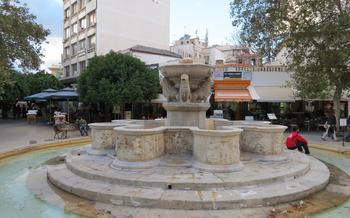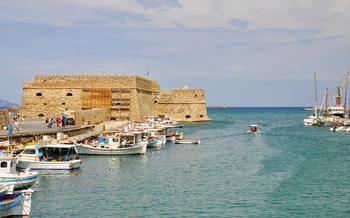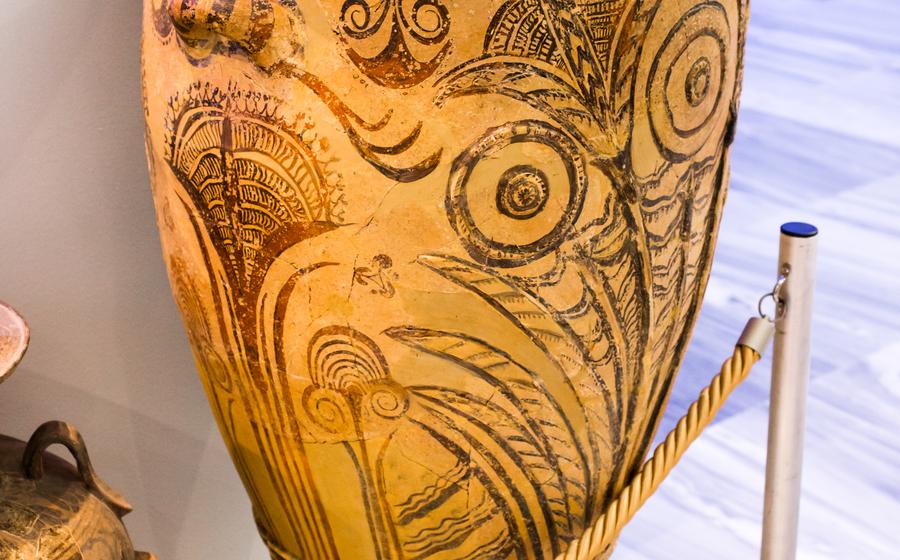
The Royal Villa at Knossos
- The Royal Villa at Knossos: A Historical Overview
- Unveiling the Throne Room: A Seat of Power
- Exploring the Residential Quarters: Private Life at Knossos
- Storage Facilities and the Economic System
- The Workshops: Unveiling Artisanal Skills
- Religious Significance: Shrines and Rituals
- Water Management and Sanitation Systems
- The Royal Gardens: A Place of Beauty and Leisure
- Frescoes and Murals: A Visual Narrative
- The Minoan Theater: A Center for Entertainment
- The Bull Cult: A Sacred Symbol
- Visiting the Royal Villa: Practical Information
- Insider Tip: Unforgettable Sunset Views
The Royal Villa at Knossos: A Historical Overview
The Royal Villa of Knossos stands as a testament to the grandeur and sophistication of the ancient Minoan civilization. This sprawling palace, believed to have been built around 1900 BC, served as the political and administrative center of the Minoan kingdom. Its intricate architectural design, with its multiple wings, courtyards, and grand staircases, reflects the power and wealth of the Minoan rulers who resided within its walls.
Throughout its history, the Royal Villa underwent several periods of occupation and use. Initially constructed during the Old Palace period, it was later expanded and renovated during the New Palace period. The villa's strategic location on the island of Crete, at the crossroads of the Mediterranean Sea, made it a hub for trade and cultural exchange, attracting merchants and visitors from distant lands.
In the 19th century, the villa was rediscovered by the renowned archaeologist Sir Arthur Evans, who conducted extensive excavations at the site. Evans's work unearthed a treasure trove of artifacts, including stunning frescoes, intricate pottery, and precious jewelry, shedding light on the vibrant culture and sophisticated lifestyle of the Minoans.
Unveiling the Throne Room: A Seat of Power
At the heart of the Royal Villa at Knossos lies the throne room, a majestic chamber that exudes power and authority. This grand space served as the seat of government for the Minoan rulers, where they conducted official business, received foreign dignitaries, and presided over ceremonies.
The throne room is distinguished by its elaborate design and opulent decorations. The walls are adorned with vibrant frescoes depicting royal processions, religious rituals, and scenes of everyday life. These murals provide a glimpse into the grandeur and splendor of the Minoan court.
The centerpiece of the throne room is the throne itself, a magnificent and intricately carved chair made of alabaster. The throne is positioned on a raised platform, emphasizing the status and authority of the ruler. It is flanked by two griffins, mythical creatures that symbolize strength and protection.
The throne room also features a series of benches and chairs arranged in a semi-circular fashion, where officials, advisors, and other members of the court would have been seated. These seating arrangements suggest a hierarchical structure, with the ruler at the head and the rest of the court arranged according to their rank and importance.
The throne room was not merely a place of political power but also a sacred space. It is believed that the Minoan rulers were considered divine figures, and the throne room served as a place where they would have performed religious rituals and received offerings from their subjects.
Overall, the throne room at the Royal Villa of Knossos offers a fascinating glimpse into the political, social, and religious life of the Minoan civilization. It is a testament to the power and prestige of the Minoan rulers and the grandeur of their court.
Exploring the Residential Quarters: Private Life at Knossos
The residential quarters of the Royal Villa at Knossos provide a glimpse into the private lives of the Minoan elite. These well-preserved spaces reveal the layout, organization, and daily activities that took place within the palace's domestic sphere.
The residential areas were divided into separate units, each consisting of living spaces, storage rooms, and workshops. The living spaces featured comfortable furnishings, including beds, chairs, and tables, adorned with intricate carvings and colorful decorations. Large windows and balconies allowed for ample natural light and ventilation, creating a sense of spaciousness and brightness.
Evidence of daily life and domestic activities is abundant throughout the residential quarters. Kitchens equipped with hearths, ovens, and storage jars suggest that food preparation and cooking were carried out within the villa. Workshops dedicated to weaving, pottery, and other crafts indicate that various productive activities took place on-site.
Artistic representations in the form of frescoes and reliefs provide further insights into household scenes and daily routines. These depictions showcase individuals engaged in various activities, such as cooking, spinning, and playing musical instruments, offering a vivid glimpse into the domestic life of the Minoans.
Storage Facilities and the Economic System
The Royal Villa at Knossos featured an extensive network of storage facilities, providing valuable insights into the economic system of the Minoan civilization. These facilities, consisting of large storerooms and granaries, played a crucial role in managing and distributing resources within the palace and the surrounding region.
The storerooms were strategically located to receive and store agricultural produce, such as grains, olives, and wine, as well as imported goods from other regions. The presence of large pithoi, or storage jars, indicates the capacity to store vast quantities of these commodities.
The efficient management of resources was essential for sustaining the large population of Knossos and the surrounding settlements. The storage facilities allowed for the accumulation and redistribution of goods, ensuring a steady supply of food and other resources for the palace and its inhabitants.
Furthermore, the storage facilities at Knossos provide evidence of trade and exchange with other regions. Imported goods, such as pottery, jewelry, and exotic materials, have been found within the storerooms, suggesting a vibrant trading network that connected Knossos with other centers of the Mediterranean.
The economic system at Knossos was complex and sophisticated, with the storage facilities playing a central role in the management and distribution of resources. These facilities not only ensured the sustenance of the palace and its inhabitants but also facilitated trade and exchange, contributing to the economic prosperity of the Minoan civilization.
The Workshops: Unveiling Artisanal Skills
Within the bustling confines of the Royal Villa at Knossos, a vibrant tapestry of artisanal activity unfolded, showcasing the remarkable skills and craftsmanship of the Minoan people. Specialized workshops, each dedicated to a particular craft, hummed with the sounds of hammers, chisels, and kilns, as artisans poured their creativity into a dazzling array of goods.
Pottery, a hallmark of Minoan artistry, flourished within these workshops. Skilled potters deftly molded clay into elegant vessels, adorning them with intricate patterns and vibrant hues. The kilns roared with heat, transforming ordinary clay into durable and aesthetically pleasing pottery, used for both utilitarian and decorative purposes.
Jewelry-making was another prized craft at Knossos. Goldsmiths meticulously fashioned exquisite pieces from precious metals, incorporating gemstones and intricate designs. Their nimble fingers crafted necklaces, bracelets, earrings, and rings, each a testament to their artistry and technical prowess.
Beyond pottery and jewelry, the workshops also produced a diverse range of other goods, catering to the needs and desires of the Minoan society. Skilled weavers created intricate textiles, adorning them with colorful patterns and motifs. Leatherworkers crafted sturdy footwear, bags, and other accessories, ensuring both functionality and style.
The tools and techniques employed by these artisans were as remarkable as their creations. They utilized specialized equipment, including potter's wheels, anvils, and kilns, demonstrating their mastery of various crafts. Their skills were passed down from generation to generation, ensuring the continuation of these artisanal traditions.
The workshops at the Royal Villa played a crucial role in the Minoan economy, producing goods for both local consumption and trade with other regions. The high quality and artistry of Minoan products were highly sought-after, contributing to the wealth and prosperity of the kingdom.
Through their exceptional craftsmanship, the artisans of Knossos left an enduring legacy that continues to captivate and inspire. Their creations, unearthed from the ruins of the villa, offer a glimpse into the vibrant and sophisticated society that once thrived on this ancient land.
Religious Significance: Shrines and Rituals
The Royal Villa at Knossos held deep religious significance, serving as a center for spiritual practices and rituals. Within the villa's complex, archaeologists have uncovered numerous shrines and sacred spaces dedicated to various deities. These shrines often featured altars, offering tables, and votive offerings, suggesting that the villa's inhabitants engaged in regular religious ceremonies and rituals.
Symbolism and iconography played a crucial role in Minoan religion, and the villa's frescoes and artifacts provide valuable insights into their beliefs and practices. Many of the paintings depict scenes of religious ceremonies, processions, and offerings, showcasing the central role of religion in Minoan society. The presence of sacred symbols, such as the double axe, horns of consecration, and the snake goddess, further emphasizes the religious significance of the villa.
The discovery of ritual objects, such as libation vessels, censers, and figurines, suggests that religious rituals were an integral part of daily life at Knossos. These rituals may have been performed to honor specific deities, seek divine protection, or celebrate important events in the Minoan calendar.
The religious significance of the Royal Villa at Knossos highlights the interconnectedness of religion and power in Minoan society. The villa served as a sacred space where the ruling elite could perform religious rituals and maintain their connection with the divine, thus reinforcing their authority and legitimacy.
Water Management and Sanitation Systems
The Minoans of Knossos demonstrated remarkable ingenuity in their water management and sanitation systems. An intricate network of stone-lined aqueducts channeled fresh water from nearby springs and rivers into the villa, ensuring a reliable supply for drinking, cooking, and bathing. Sophisticated cisterns, some reaching depths of over 10 meters, collected and stored rainwater for use during dry spells.
The drainage system at Knossos was equally impressive. Stone-lined gutters and drains effectively channeled wastewater away from the villa, preventing the buildup of unsanitary conditions. The Minoans' advanced plumbing and sanitation techniques, far ahead of their time, contributed to the overall cleanliness and health of the royal residence and the city itself.
These water management and sanitation systems played a crucial role in the prosperity and longevity of the Minoan civilization. Their engineering prowess allowed them to harness and distribute water resources efficiently, ensuring a clean and healthy environment for the inhabitants of Knossos.
The Royal Gardens: A Place of Beauty and Leisure
Amidst the grandeur of the Royal Villa at Knossos, the gardens were an oasis of tranquility and beauty. These meticulously landscaped spaces served as places of relaxation, entertainment, and feasting for the Minoan elite.
The gardens were adorned with a variety of plants and flowers, creating a vibrant tapestry of colors and fragrances. Cypress trees, olive groves, and aromatic herbs filled the air with their sweet scents. Irrigation systems ensured that the gardens remained lush and verdant, even during the hot summer months.
In the shade of the trees, stone benches and tables were arranged, inviting visitors to sit and enjoy the serenity of the surroundings. Water features, such as fountains and pools, added a touch of tranquility and elegance to the gardens.
During the warm summer evenings, the gardens were transformed into a venue for lavish feasts and entertainment. Minoan nobles and dignitaries would gather to dine on delicious food, sip sweet wine, and enjoy the performances of musicians, dancers, and acrobats.
The gardens also held symbolic significance. They were believed to be the earthly representation of the paradise of the gods, a place of eternal beauty and abundance. Artistic depictions often showed the gardens as a place where humans and divine beings interacted harmoniously.
Exploring the gardens of the Royal Villa at Knossos is like stepping into a timeless oasis. Visitors can imagine the Minoan elite strolling through the fragrant paths, admiring the beauty of nature, and enjoying the pleasures of life.
Frescoes and Murals: A Visual Narrative
The walls of the Royal Villa at Knossos come alive with vibrant frescoes and murals, offering a captivating glimpse into the artistic prowess and storytelling traditions of the Minoan civilization. These artworks, painted with a rich palette of colors, depict a diverse range of subjects, from scenes of nature and daily life to mythological narratives and religious rituals.
The frescoes and murals at Knossos are renowned for their intricate details and expressive style. Artists employed a variety of techniques to create depth and realism, including shading, perspective, and the use of vibrant colors. The subjects depicted in these artworks provide valuable insights into Minoan beliefs, values, and cultural practices.
One of the most famous frescoes from Knossos is the "Prince of the Lilies," which portrays a young man surrounded by lilies and other flowers. This fresco is believed to represent a prince or other high-ranking individual, and it showcases the Minoan appreciation for beauty and nature.
Another notable fresco is the "Toreador Fresco," which depicts a bull-leaping scene. This fresco captures the essence of the Minoan bull cult, which revered the bull as a sacred animal. The fresco showcases the agility and athleticism of the bull-leapers, who performed dangerous acrobatic feats over the backs of charging bulls.
The frescoes and murals at the Royal Villa at Knossos offer a unique and visually stunning window into the world of the Minoan civilization. These artworks provide a glimpse into the daily lives, religious beliefs, and cultural practices of this ancient society, making them an essential part of any visit to Knossos.
The Minoan Theater: A Center for Entertainment
Amidst the grandeur of the Royal Villa at Knossos, the Minoan theater stands as a testament to the vibrant cultural life of this ancient civilization. Constructed in the 17th century BC, this remarkable structure is one of the earliest known theaters in the world, predating the famous theaters of ancient Greece.
With a seating capacity of approximately 500 spectators, the theater's design showcases the ingenuity of Minoan architects. Arranged in a semicircular fashion, the tiered seating provides excellent views of the central performance area. The theater's acoustics are also impressive, ensuring that the voices of performers could be heard throughout the auditorium.
The types of performances held in the Minoan theater are a matter of speculation, but it is believed that they included religious ceremonies, musical performances, and theatrical productions. The theater's proximity to the palace suggests that it may have been used for royal entertainment and official events.
The Minoan theater is a significant reminder of the importance of the arts and entertainment in Minoan society. It offers a glimpse into the vibrant cultural life of this ancient civilization and stands as a testament to their enduring legacy.
The Bull Cult: A Sacred Symbol
Central to Minoan culture, the bull held a sacred and symbolic status at Knossos. Evidence of bull worship and rituals permeates the villa and its surroundings, showcasing the deep reverence accorded to this majestic creature. Artistic representations of bulls abound, gracing frescoes, sculptures, and artifacts, each imbued with unique symbolism and meaning.
The bull was revered as a symbol of strength, virility, and fertility, embodying the generative forces of nature. Its horns, often depicted with great detail and prominence, were seen as a representation of the sun's rays and the regenerative power of the earth. Bulls were also associated with the underworld and the afterlife, serving as guardians and guides for the deceased in their journey to the next realm.
The most iconic representation of the bull cult at Knossos is the famous "Bull-Leaping" fresco, which depicts young men and women performing acrobatic feats over the backs of charging bulls. This fresco, along with other artistic representations, provides a glimpse into the ritualistic practices associated with bull worship, which likely involved elaborate ceremonies, sacrifices, and performances.
The bull cult played a central role in Minoan religion and mythology, influencing various aspects of their cultural and spiritual life. It represented the interconnectedness between the natural world, the divine realm, and human existence, shaping the beliefs, values, and practices of the Minoan civilization.
Visiting the Royal Villa: Practical Information
Visiting the Royal Villa at Knossos is an unforgettable experience that offers a glimpse into the grandeur and sophistication of Minoan civilization. The villa is conveniently located just a short distance from the city of Heraklion, making it easily accessible for visitors.
To fully appreciate the villa's significance, guided tours are highly recommended. Knowledgeable guides provide insightful commentary on the history, architecture, and artifacts, bringing the site to life.
The villa is open to the public daily, and admission fees are reasonable. It's best to plan your visit during the shoulder seasons (May-June and September-October) to avoid the summer crowds and enjoy milder weather.
Remember to wear comfortable shoes, as the villa involves walking on uneven surfaces. Sun protection, water, and a hat are essential, especially during hot summer days.
After exploring the villa, take some time to visit the nearby Heraklion Archaeological Museum, which houses a vast collection of Minoan artifacts, including many found at Knossos. The museum offers a deeper understanding of the Minoan civilization and its cultural achievements.
To complete your Knossos experience, consider exploring the surrounding area. The Palace of Knossos, located a short distance from the villa, is another must-see attraction, showcasing the grandeur of the Minoan civilization on a larger scale.
With its rich history, stunning architecture, and beautiful surroundings, the Royal Villa at Knossos is a destination that promises an enriching and memorable visit.
Insider Tip: Unforgettable Sunset Views
For an unforgettable experience at Knossos, plan your visit to coincide with sunset. As the sun begins to dip below the horizon, the landscape transforms into a breathtaking panorama of golden hues. The ancient ruins cast long shadows, creating a magical and ethereal atmosphere. From the villa's vantage point, you'll have a front-row seat to this natural spectacle.
Capture the beauty of the sunset with your camera, as the sky erupts in vibrant colors that paint the sky. The warm glow illuminates the surrounding mountains and valleys, creating a picturesque backdrop for your photographs. Don't forget to bring a tripod to stabilize your camera and capture sharp, stunning images.
As the sun bids farewell to Knossos, take a moment to reflect on the rich history and cultural significance of this ancient city. The sunset views from the villa offer a unique and awe-inspiring perspective, allowing you to connect with the past in a truly unforgettable way.
